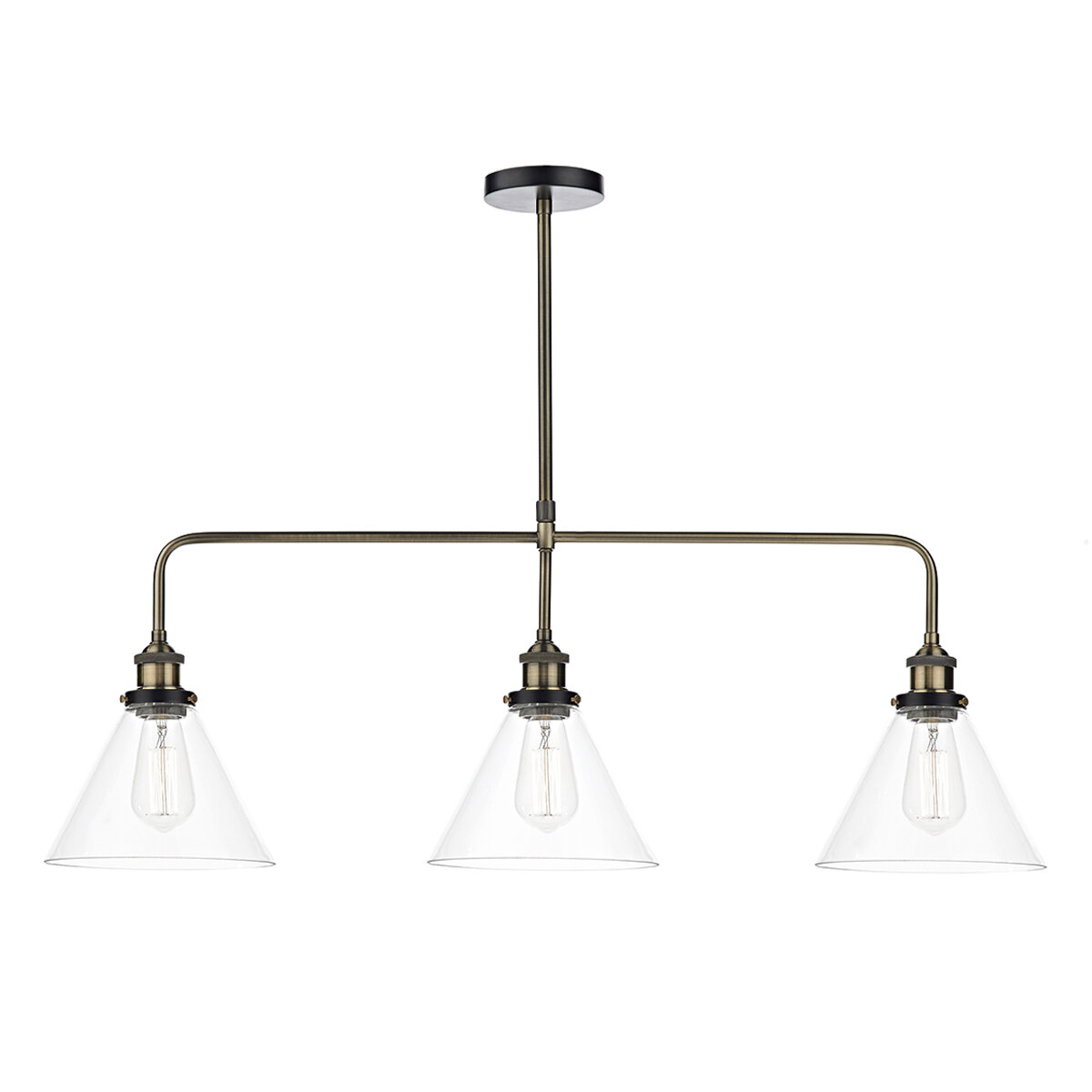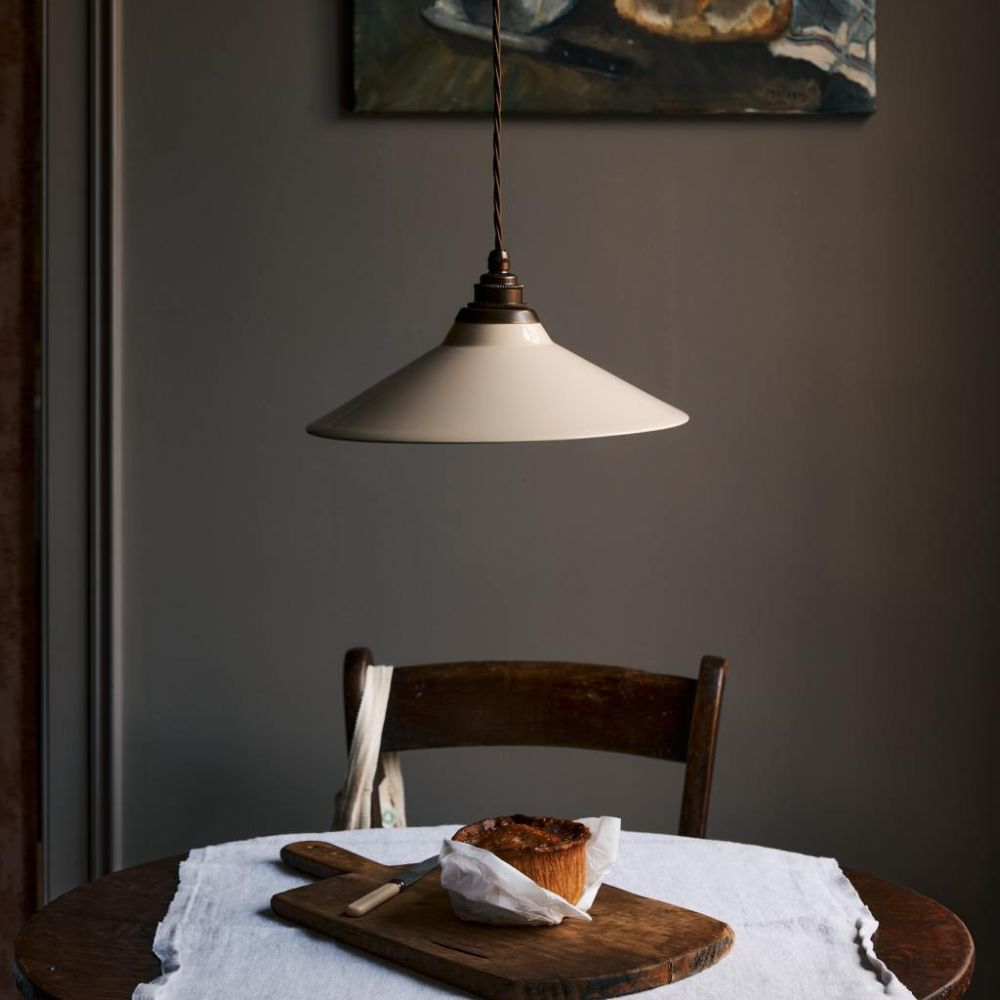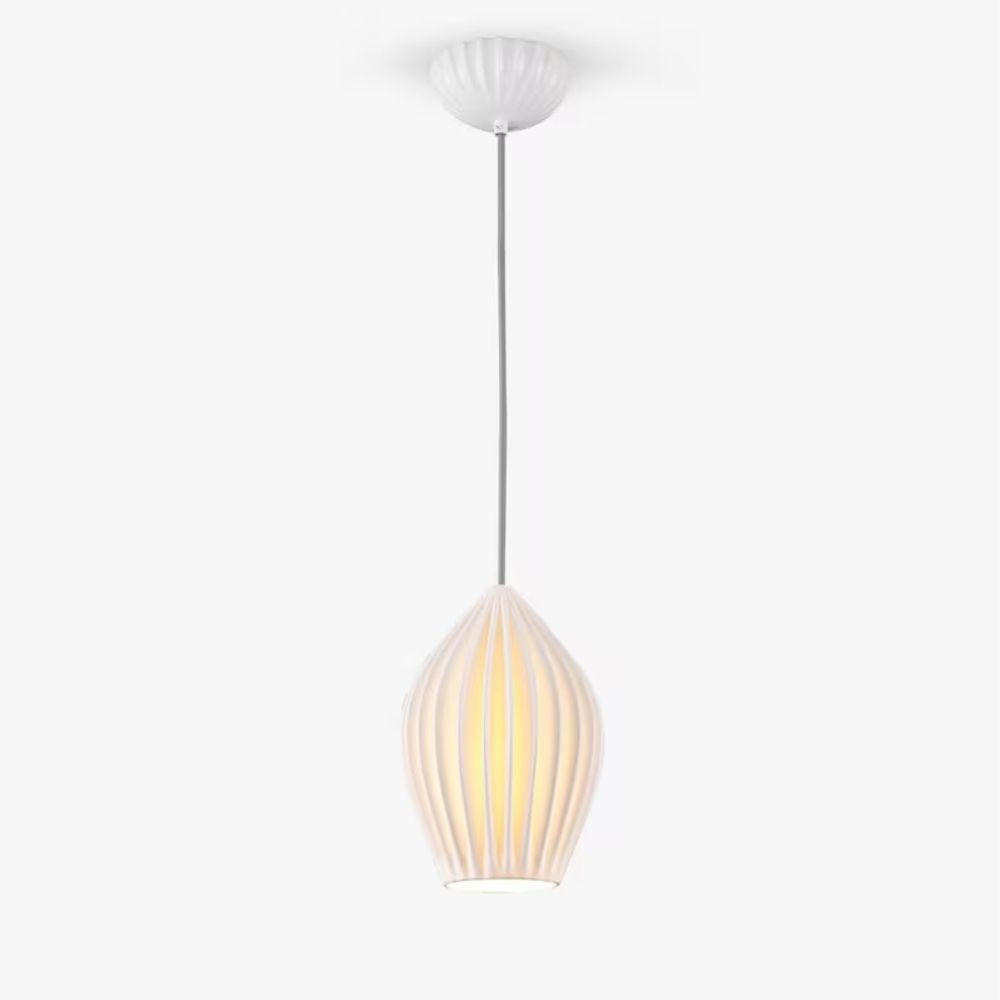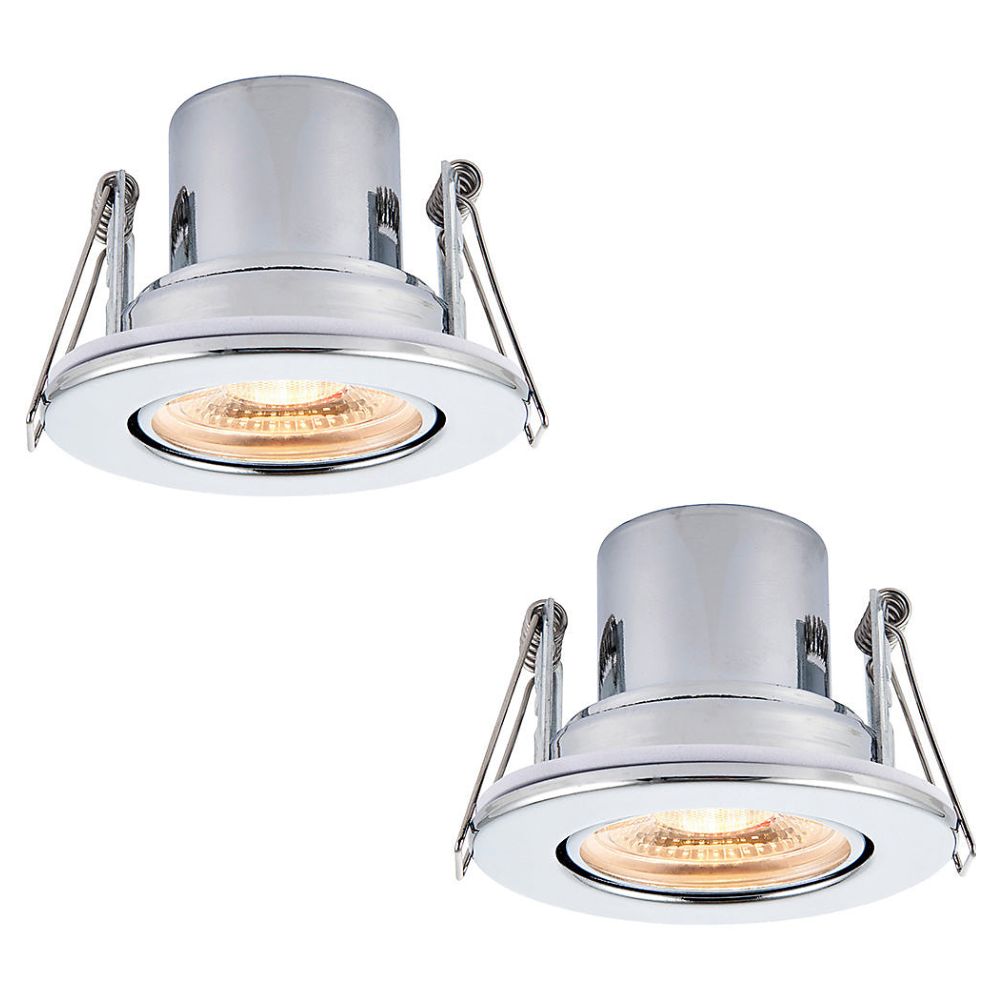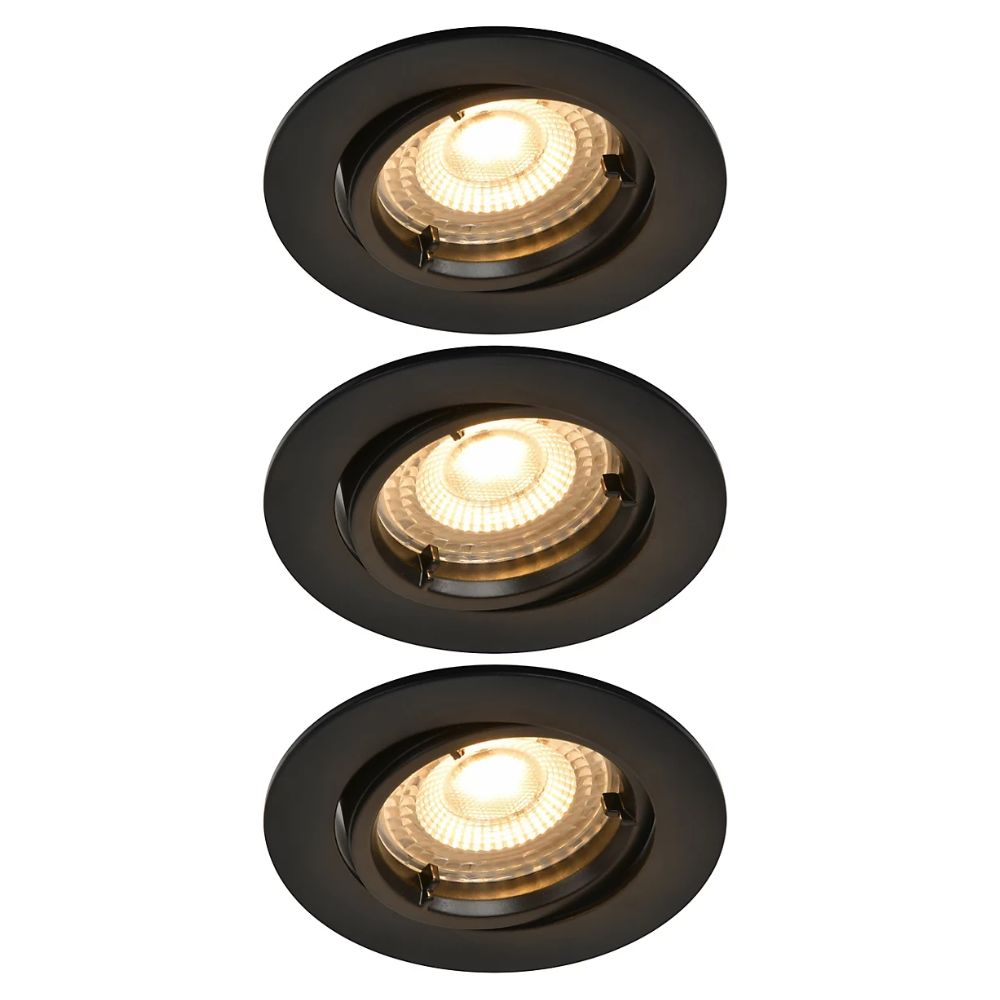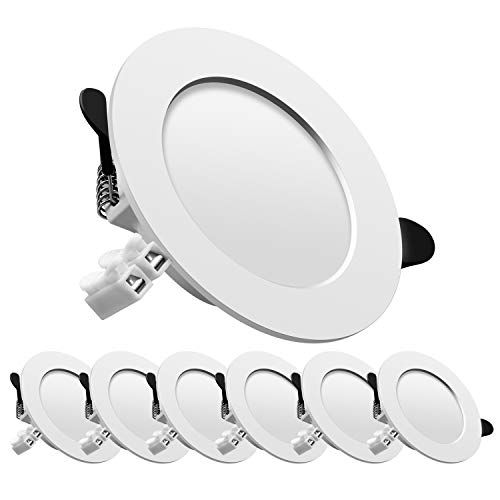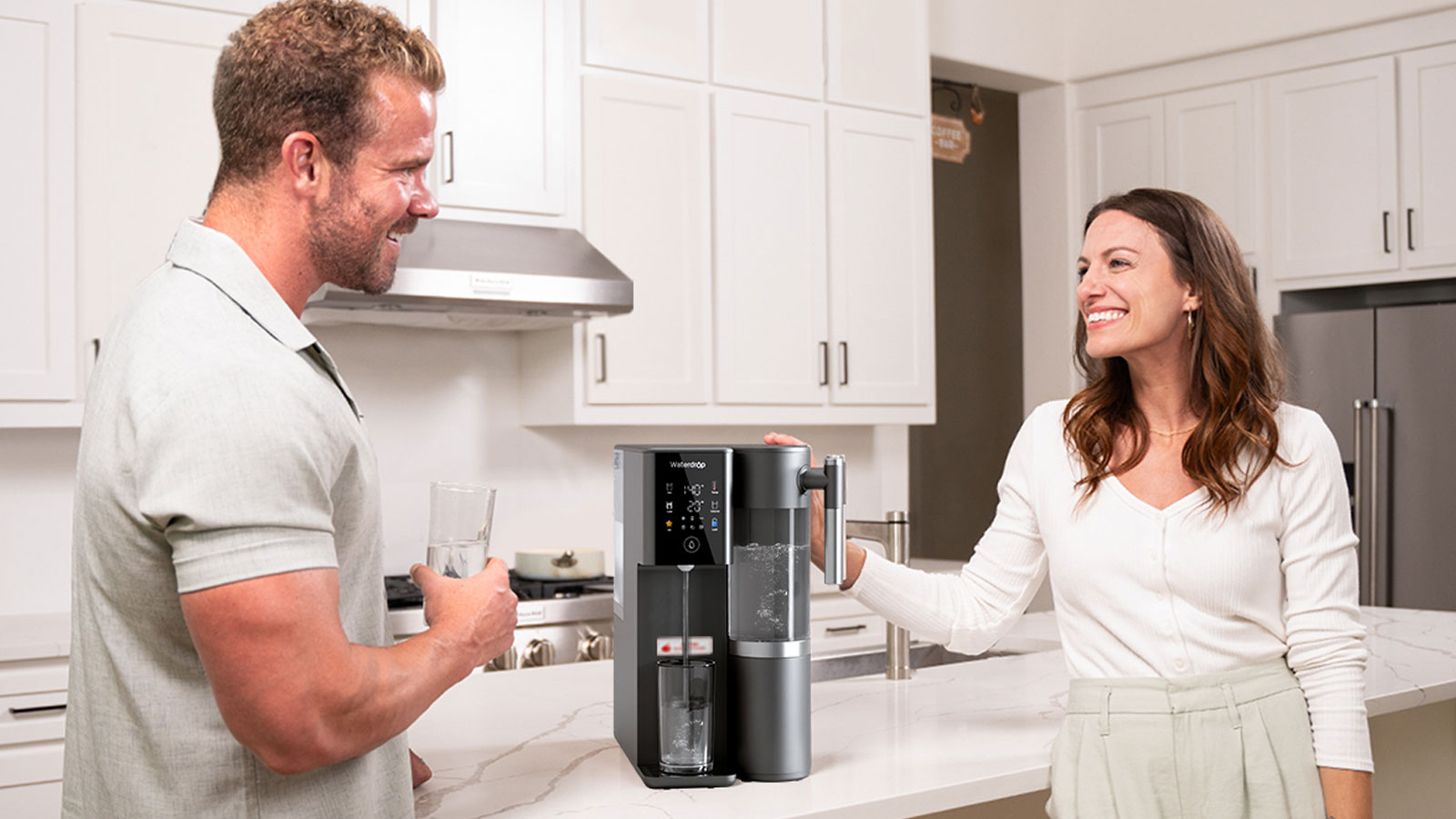This is the best lighting for kitchen ceilings according to design experts
Your guide to the best lighting for kitchen ceilings, with expert advice on everything from brightness to fixture design
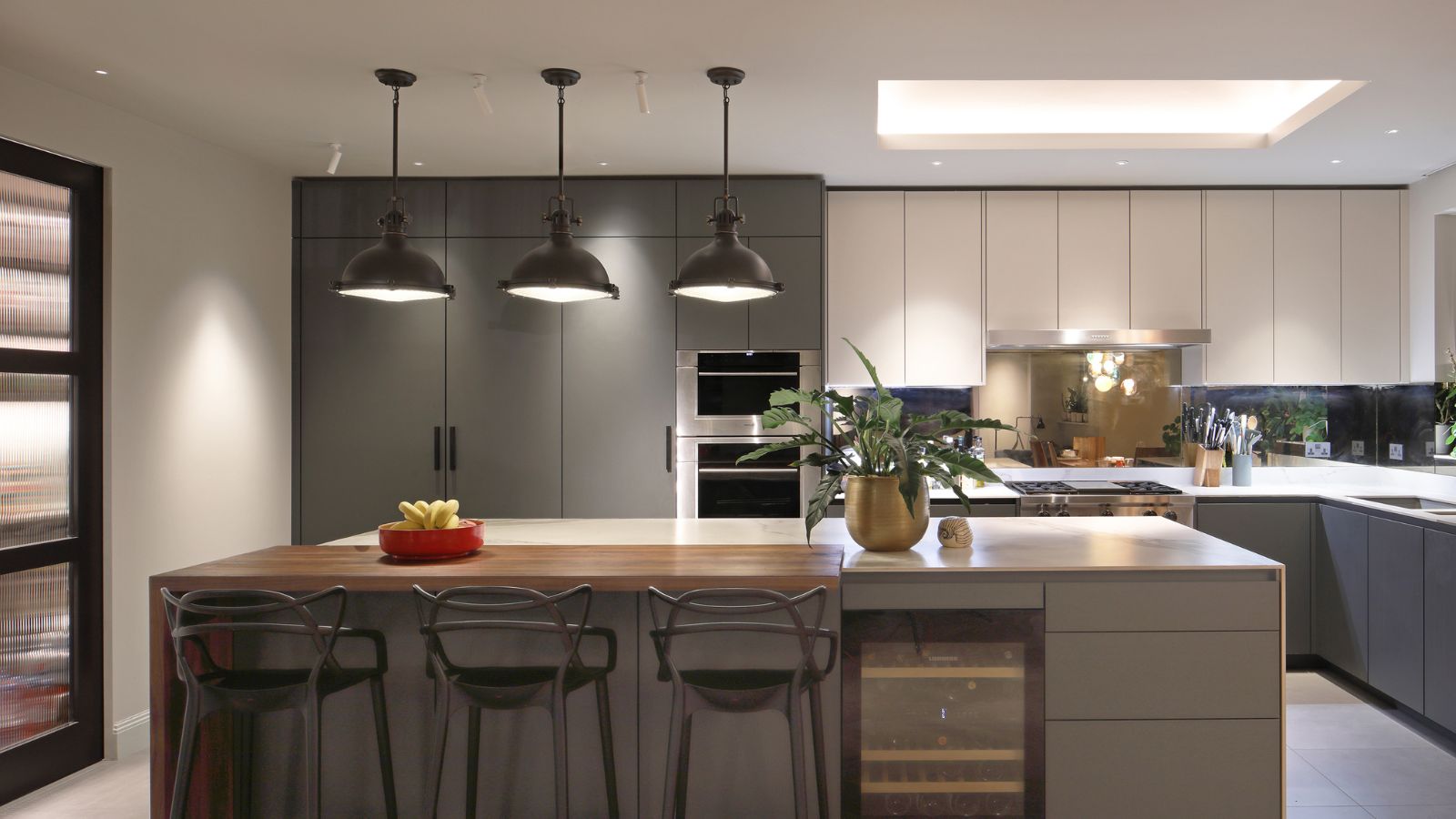
Choosing the right ceiling lights for your kitchen can be quite the challenge. Should you go for the sleek practicality of recessed spotlights, the statement-making appeal of pendant kitchen lighting, or a layered combination of both? To help you navigate these choices, we asked top kitchen and lighting experts to share their industry insights.
From selecting the ideal fixtures to designing a flexible kitchen lighting scheme with dimmers and circuits, we’ve put together a straightforward guide to what you need to know to light your kitchen beautifully. Whether you’re renovating the entire space or simply upgrading your ceiling lights, these expert tips will help you make the best choice for your home.
The importance of lighting for kitchen ceilings
"Kitchen lighting design needs to have the most flexible interior lighting scheme in the home to reflect the wide range of functions which kitchens are now used for," explains Luke Thomas, design director at John Cullen Lighting. "Ceiling lighting is essential in a kitchen because it provides general illumination for the space, ensuring functional lighting for activities such as preparing food, cooking, and cleaning, as well as general illumination to create a welcoming environment."

Luke Thomas, Design Director at John Cullen Lighting, has over 15 years' experience creating design-led lighting solutions. He collaborates with top designers, architects, and clients on diverse projects, from mansions to Scottish castles.
The Best Ceiling Lighting For Kitchens
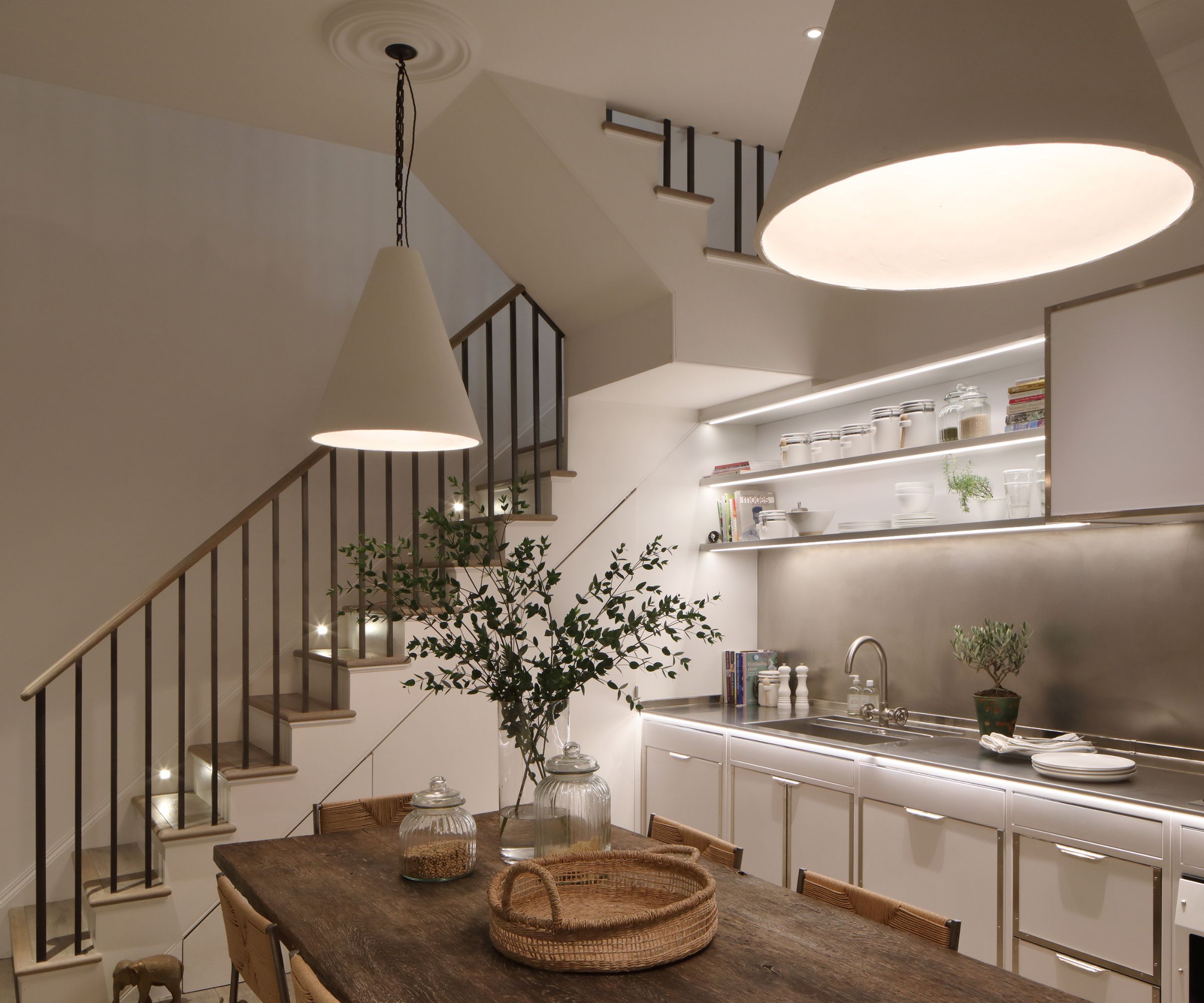
"When selecting the right ceiling lights for a kitchen, it's important to first determine how you want the space to feel," says Hanna Walter, creative manager at Heathfield & Co. "Bright and energising, warm and inviting, or something in between. Consider how you want to strike the balance between ambient, task and accent lighting to create an atmosphere that suits your needs."

Hanna Walter is creative manager at Heathfield & Co. Working with a team of skilled makers and curators, she helps deliver timeless, bespoke lighting solutions trusted by renowned interior designers for over 40 years.
Brightness and warmth
When it comes to brightness and warmth for kitchen ceiling lights, you want to find a good balance between functionality and atmosphere. Bright, cool-toned lighting (around 3000K to 4000K) is ideal for task-heavy areas like countertops, islands, and sinks, as it provides the crisp clarity needed for chopping, cooking, and cleaning. However, incorporating warmer tones (2700K to 3000K) in dining or entertaining areas helps create a cosy, inviting ambience perfect for family meals or social gatherings.
Pendant kitchen lights
"In a kitchen with high ceilings, look at visually lowering the sense of scale by adding low hanging pendants over the island," says Luke Thomas. "This can also help delineate the space in an open plan kitchen."
Hanna Walter agrees, "Pendant lights are perfect for kitchen ceilings, as they can be hung individually or in small groups and create a statement without feeling obtrusive or taking up valuable space on the countertops," she explains. "We would always recommend hanging pendants around 36cm above any worktops or kitchen islands to provide task lighting but also keep the space feeling spacious and airy. Keep in mind how spacious your kitchen is and select the size and quantity of pendant lights accordingly, so as not to overwhelm the space or create a stark feeling."
Helen Parker, creative director at deVOL kitchens, suggests keeping your kitchen pendant lights subtle and not too overpowering, "It's hard to resist the urge to really make your mark with these types of light, but try to be less obvious and go for simple, understated and beautiful designs."
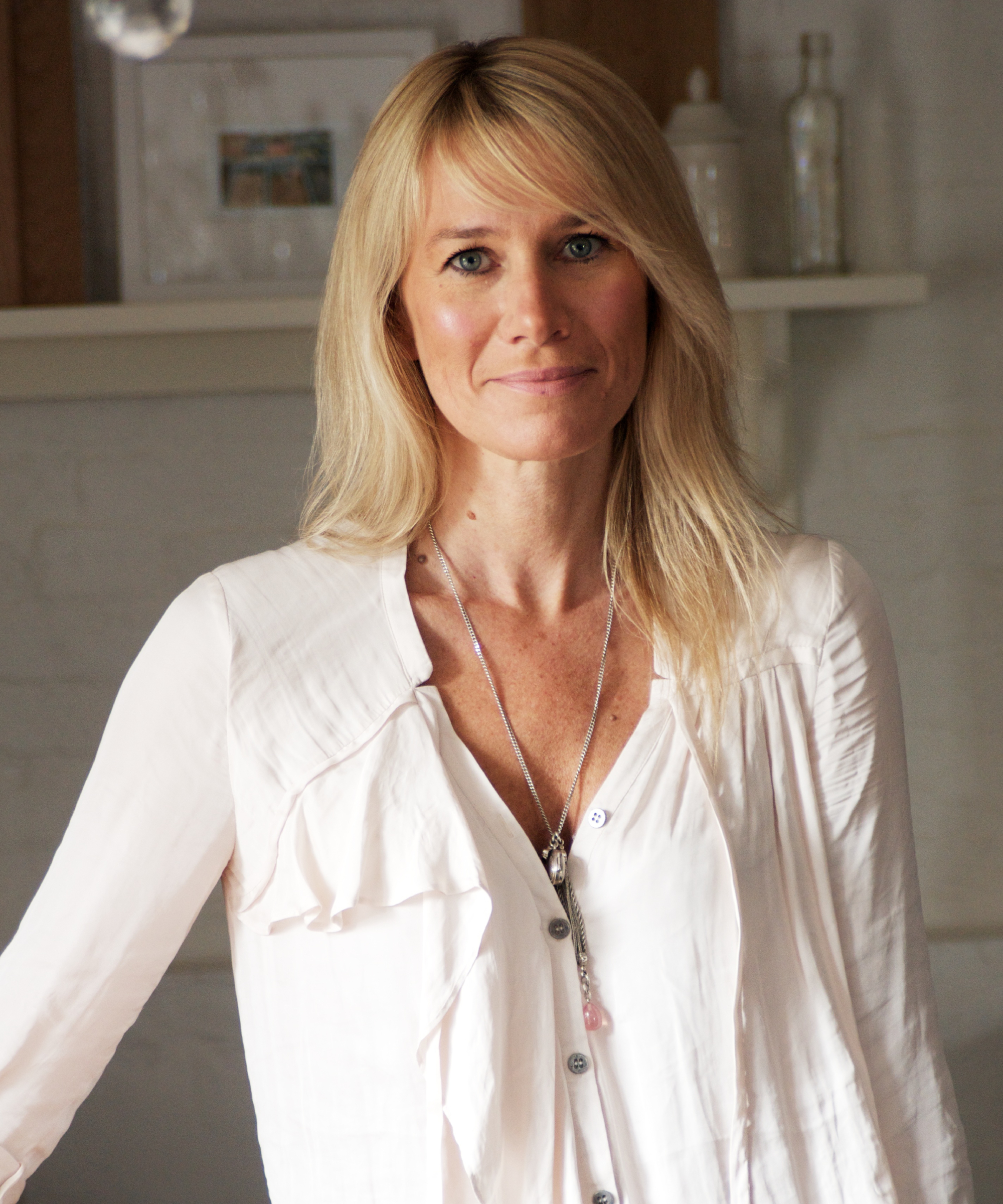
Helen Parker, Creative Director at deVOL, has shaped the brand’s iconic, understated style over 13 years. Her passion for kitchen design and storytelling has elevated deVOL to a household name.
Shop kitchen ceiling pendant lights
Ceiling Downlights & Spotlights
Ceiling spotlights or downlights are another excellent choice for kitchens. Whether you’re prepping meals or simply showing off your kitchen countertops, downlights provide a good level of illumination without drawing attention away from your décor.
To get this type of lighting right, placement is key. Instead of arranging spotlights in a standard grid, Luke Thomas recommends positioning them strategically over worktops, sinks, or other key areas where task lighting is required. This approach not only avoids overloading your kitchen with unnecessary fixtures but also helps highlight the design details you love, like a statement backsplash or worktop.
“Use a low-glare directional downlight to wash the front of your kitchen units,” recommends Luke. “This not only provides a soft, reflected light to the space but also lights inside cupboards when they’re open.”
For kitchens with higher ceilings, downlights work beautifully when paired with pendants. Together, they create layers of light that are both practical and atmospheric. “LED downlights placed between pendants ensure you have good task lighting on the work surface below,” Luke adds.
If you want even more flexibility, consider putting downlights on dimmer switches or separate circuits. This allows you to brighten the space for busy mornings or dial it down for a more relaxed evening ambience.
Shop kitchen spotlights
How to Layer Kitchen Ceiling Lights
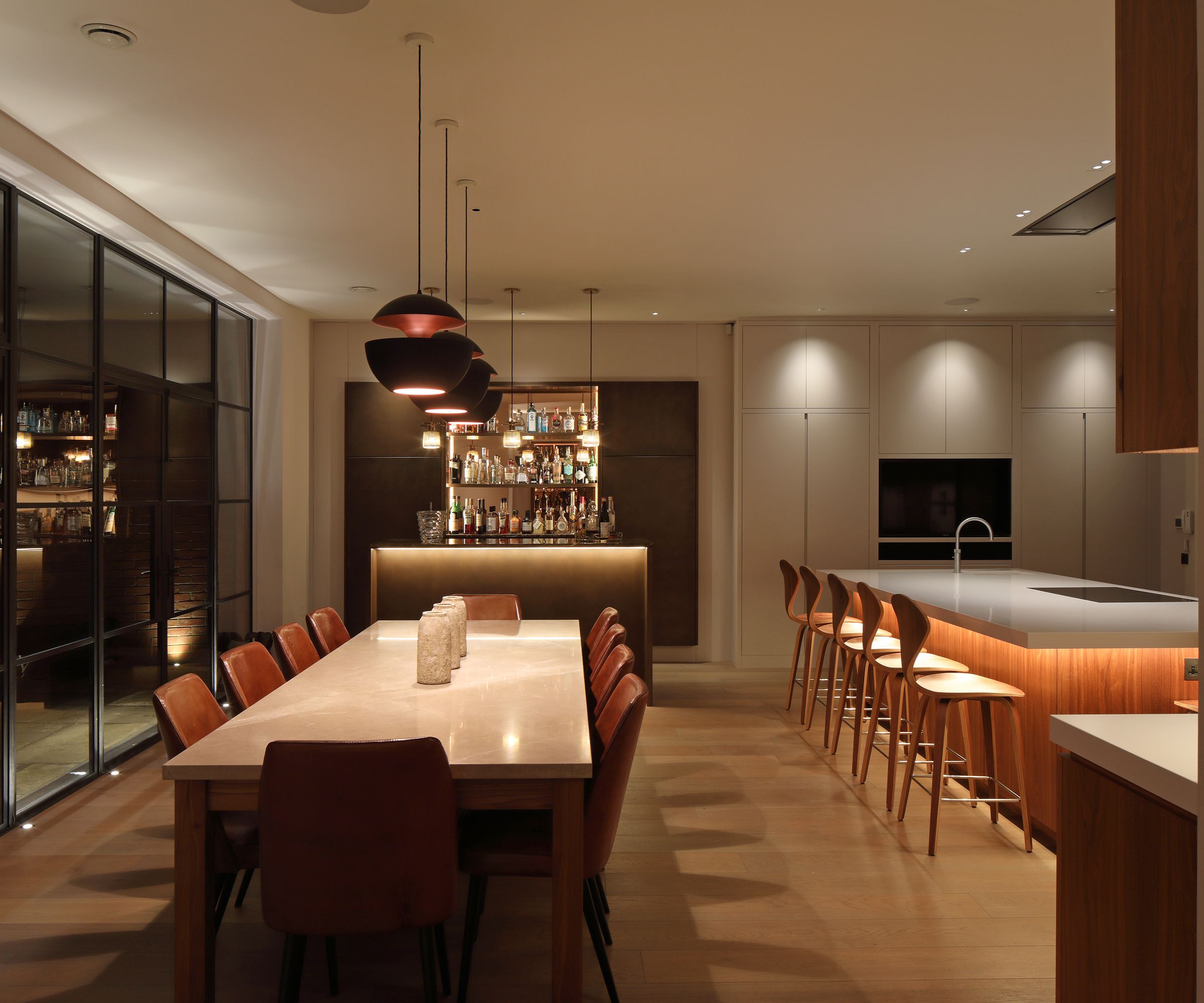
A well-lit kitchen doesn’t rely on a single source of light, it’s all about layers of light. By combining different types of lighting, you can create a space that feels balanced, practical, and inviting no matter the time of day or activity at hand. Successful layered lighting blends task, ambient, and accent lights to ensure every corner of your kitchen shines in just the right way.
“Kitchen lighting should strike a balance between atmospheric and functional,” explains Hannah Walter. Her advice is to start with focused lighting for workspaces, like a trio of Nora Pendant Lights by Heathfield & Co above a kitchen island, to provide bright, direct illumination. Then, shift the focus to more ambient features in entertaining spaces. “The Rayne Chandelier by Heathfield & Co is a real conversational piece and emits a warm, diffused glow to create a calming atmosphere,” she adds.
For added dimension, Luke Thomas suggests looking beyond downlights. “Layered lighting will add more interest and impact than just using kitchen downlights. Consider using LED linear strip lights or adding discreet uplights to a dark corner or to light an arch or doorway,” he advises. Installing linear lighting above cabinets is another clever trick, as it reflects light upward, softening the overall effect and reducing the need for excessive downlights.
Don’t forget the softer touches, either.“Combining ceiling lights with wall lights is a great way of mixing up the feel of a room,” says Helen Parker. “To create a softer light and really give character to the room, I would always recommend wall lights in a kitchen. A little pool of light in a dark corner can make all the difference – unexpected lighting and a little styling can really elevate a space.”
FAQs
How can you use dimmer switches for kitchen ceiling lights?
"Kitchen lighting always works best when you allow for flexibility to change the mood from the daytime, when you want it to be bright, to the evening, when you are looking for a more subdued light to entertain by," explains Luke Thomas from John Cullen Lighting.
"To achieve this, firstly put your lights on different circuits. Wall lights, under cupboard lights, downlights and feature lighting should all on different circuits so each can be controlled individually. At a minimum fit dimmers, or if budget allows fit a pre-set control system that can change to different moods at the touch of a button."
For further guidance, you may want to read our guide to the basics of electrics
How many downlights do I need in a kitchen?
Getting the number of downlights right depends on your kitchen’s size and layout. As a rule of thumb, one downlight per 1.5 square metres (16 square feet) works well, but placement matters more than quantity. Focus on positioning downlights directly over task areas like counters and sinks, and avoid placing them near walls to prevent shadows. To keep the space feeling balanced, pair downlights with other lighting, such as pendants over an island or LED strips under cabinets. In small kitchens, 3-4 downlights are usually enough, and using dimmers or separate circuits helps create a flexible, adaptable lighting scheme.
What are the common mistakes to avoid with kitchen ceiling lighting?
One of the biggest kitchen lighting mistakes is over-lighting, which can make the space feel harsh and clinical. Instead, focus on strategically placing lights where they’re needed most, like over worktops and sinks. Placing overhead lighting too close to walls is another common pitfall, as it can create unflattering shadows. To add depth and interest with ceiling lights, focus on layering your lighting by mixing pendants, wall lights, and under-cabinet fixtures.
Want to get your kitchen just right? Avoid these common kitchen design mistakes during your renovation or self-build project, and explore expert tips for lighting a kitchen island if it’s set to become the heart of your cooking space.
Bring your dream home to life with expert advice, how to guides and design inspiration. Sign up for our newsletter and get two free tickets to a Homebuilding & Renovating Show near you.

Gabriella is an interiors journalist and has a wealth of experience creating interiors and renovation content. She was Homebuilding & Renovating's former Assistant Editor as well as the former Head of Solved at sister brand Homes & Gardens, where she wrote and edited content addressing key renovation, DIY and interior questions.
She’s spent the past decade crafting copy for interiors publications, award-winning architects, and leading UK homeware brands. She also served as the Content Manager for the ethical homeware brand Nkuku.
Gabriella is a DIY enthusiast and a lover of all things interior design. She has a particular passion for historic buildings and listed properties, and she is currently in the process of renovating a Grade II-listed Victorian coach house in the West Country.
